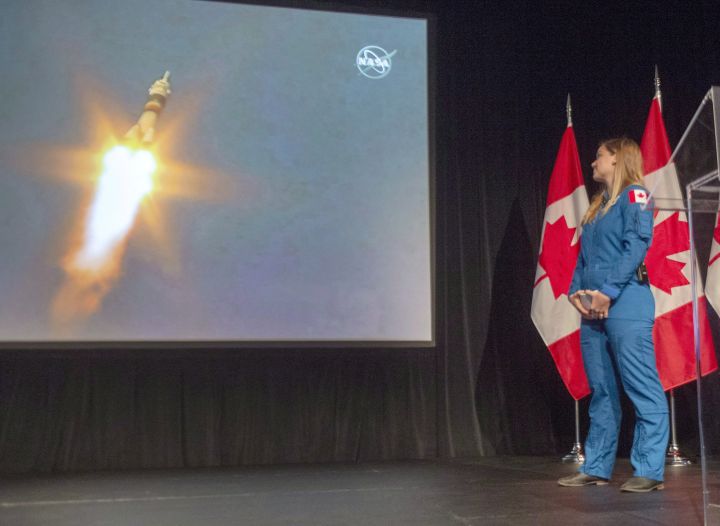It’s a small step toward the moon, but a giant leap for two Canadians.

Joshua Kudryk and Jenni Sidey-Gibbons graduated Friday along with 11 Americans from NASA’s basic astronaut training and will be part of the next generation of space explorers hoping to return to Earth’s satellite and beyond.
“We want to be part of the international collaboration that goes to the moon,” Sidey-Gibbons said in a phone interview from Houston. “My goal is to do that.”
Kudryk, 37, is from Fort Saskatchewan, Alta., and Sidey-Gibbons, 31, is from Calgary. They have spent the last two years in Houston’s Johnson Space Centre, where they have studied everything from Russian to space-walking. There are at least another several years of training to come before either new astronaut gets a mission assignment.
Kudryk, a fighter test pilot and holder of three graduate degrees, said he can’t wait.
“I’m looking forward to carrying forward the torch of the Canadian space program. Considering our size, it has been immensely successful.”
That first look at Earth from above would be unforgettable, said Sidey-Gibbons, who holds a PhD in engineering and is a former lecturer at Cambridge University.
READ MORE: ‘A new dawn’: Christina Koch sets women’s record for longest spaceflight
“Seeing Canada for the first time, looking back at the Earth, that is supposed to be a profound moment that is really life-changing. Being able to describe that to people and hopefully bring those photos back and share them with Canadians would be really special for me.”
The U.S. space program has committed to return to the moon by 2024 and perhaps set up a base there. It would serve as a platform for an eventual mission to Mars.
“It is happening,” Kudryk said. “Probably the best part of my job is working and getting to see that work being done every day.”
Canada, through the Lunar Gateway program, is part of that.
Both Canuck space travellers expect that the continuing space effort will spin off significant benefits for those remaining on Earth.
“The reason why we have that phone in our pocket is because of the miniaturization of electronics that began in the Apollo era,” said Sidey-Gibbons, referring to the U.S. effort that landed the first man on the moon in 1969.
“We solve problems in space that help us have better lives on Earth,” said Kudryk. “There are literally hundreds of experiments being done right now as we speak on the International Space Station that are specifically related to health care, to dealing with aging and diseases.”
READ MORE: Astronauts aboard International Space Station successfully grow space meat for first time
Astronaut training is highly technical and physically draining. Sidey-Gibbons said the most valuable lesson she has learned is about humans.
“The most important thing I have learned is how to be an effective crew member. The communication and expeditionary skills the Canadian Space Agency and NASA have emphasized for us have been hugely helpful in learning how to live and work with other people.
“It’s been a priority of our class to have those skills and develop them together.”
Watch below: Some Global News videos about astronauts.

















Comments